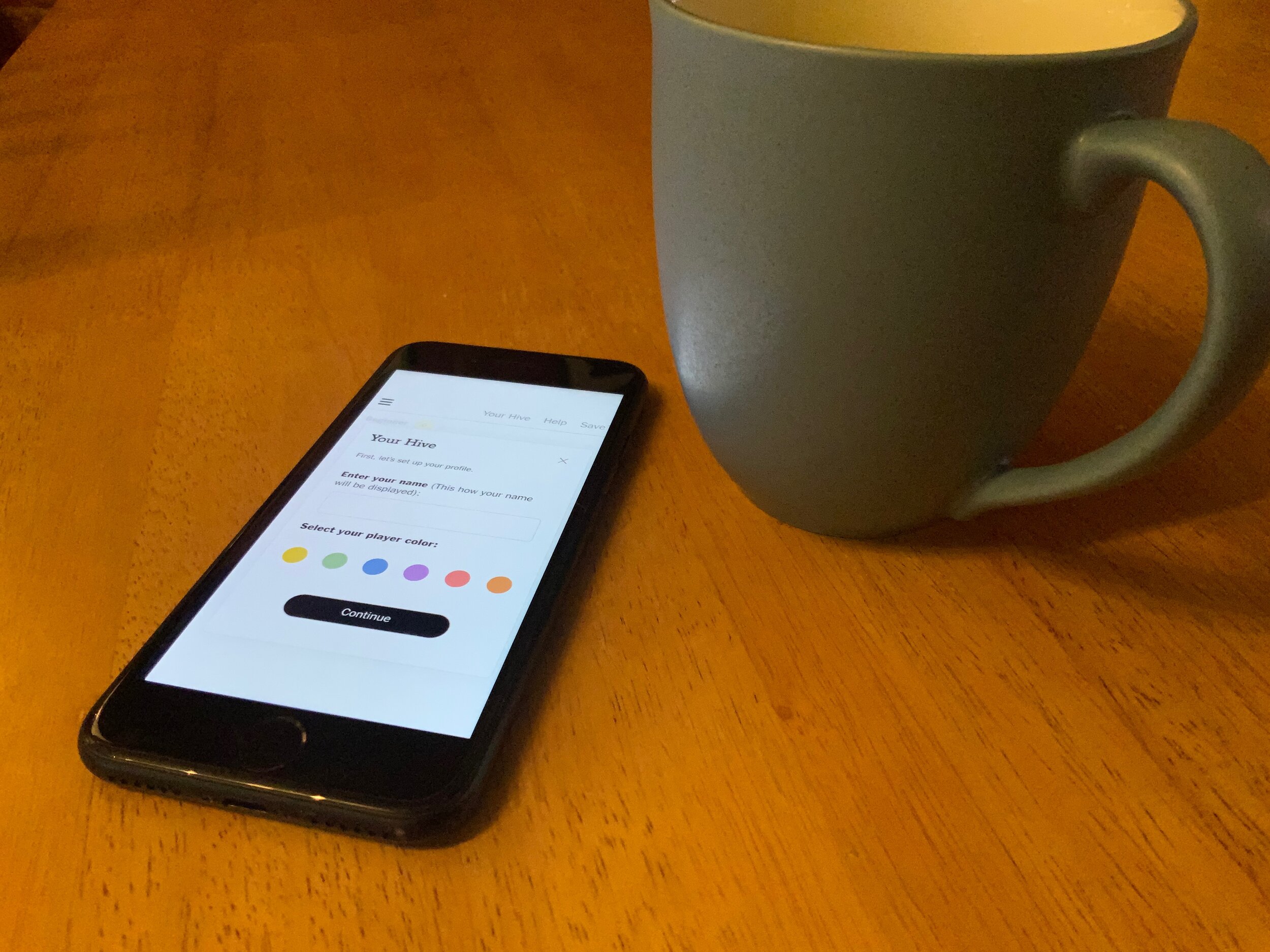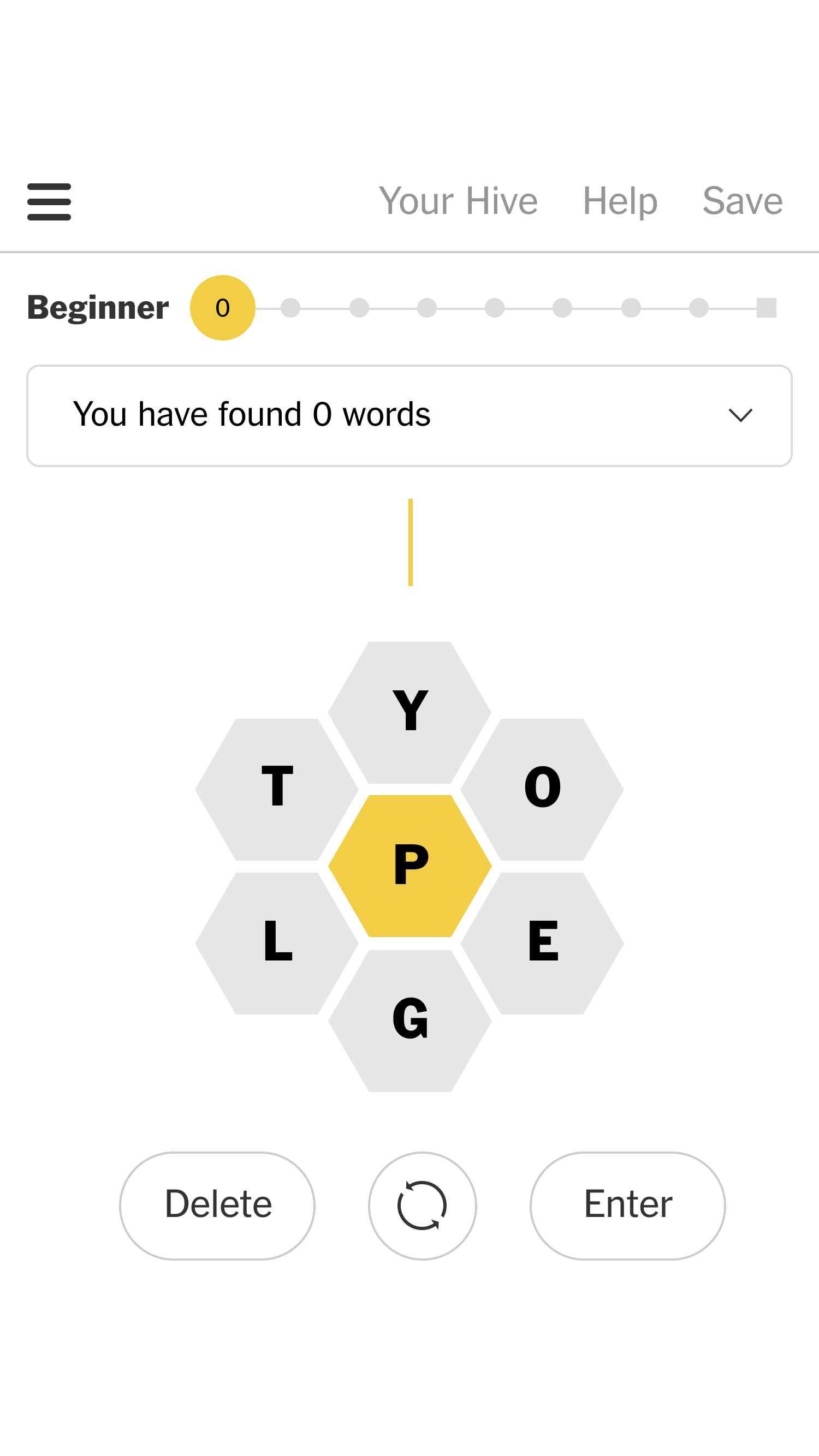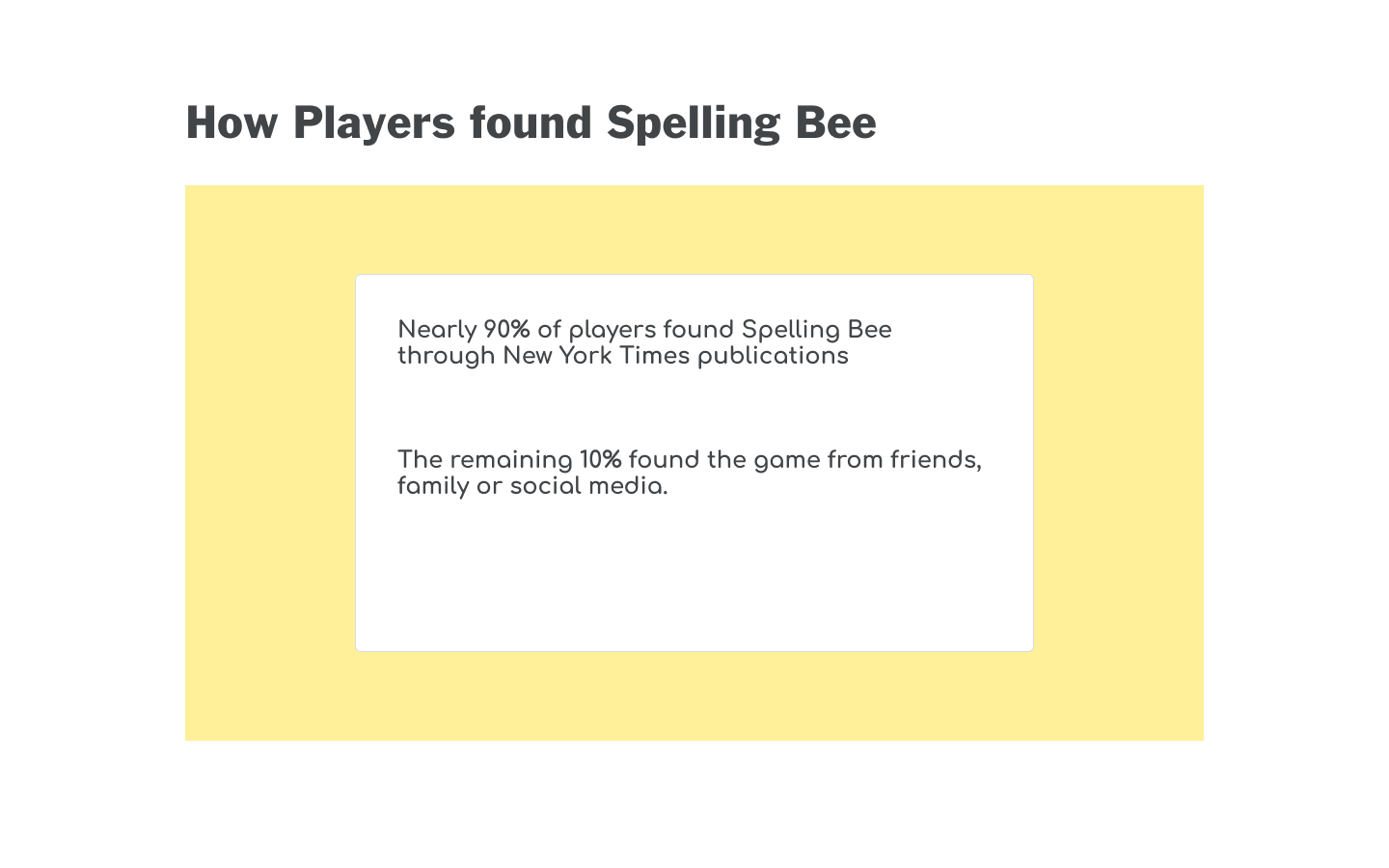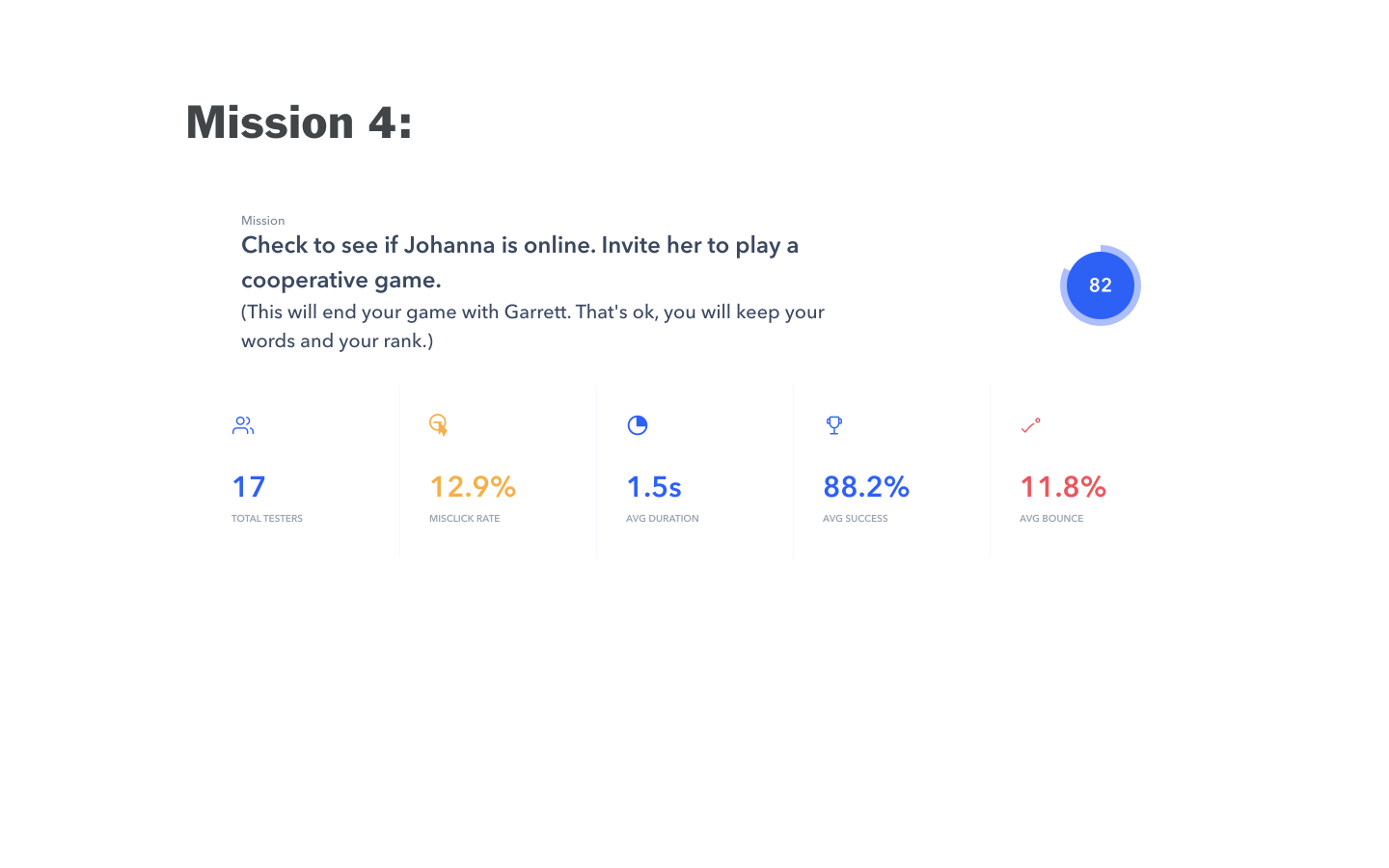
Adding Social Play
to NYT Spelling Bee
My role: UX Designer
The Mission:
The New York Times created a bit of a classic with the game Spelling Bee. The game is hugely popular if you gauge by social and standard media buzz.
The gameplay is simple, addictive, and satisfying. Every day at 3 am, a new curated puzzle is published featuring 7 letters in hexagonal tiles arranged in a beehive configuration. The player’s goal is to find as many words as they can using the letters in the puzzle throughout the day.
My job: Learn what makes the game successful and explore possibilities and pitfalls of adding multi-player or social play features to an already successful game.

Design Process:

1
Discover
What’s buzzing in the NYT Spelling Bee community?
My Research Goals
Learn about social play games and other competitors
Identify key players and find the “desire lines”
Discover habits and rituals surrounding the game
What does the competition do?
I looked at a number of popular social play apps, word games, and even board games to see how social play may be implemented in Spelling Bee.
Where are the desire lines?
In order to empathize with players and non-players of The New York Times Spelling Bee, I set up two surveys.
I posted a link to a survey for non-players with generalized questions surrounding social puzzle gaming to several sites including groups on FaceBook, Slack, and Reddit. I received 15 responses.
As luck would have it, the launch date for the Spelling-Bee-specific survey happened to be a date with a particularly historic puzzle, containing more solutions than any other previous puzzle. I posted the survey to several Facebook Spelling Bee groups, To Twitter, simply tagged #NYTSpellingBee, and to a Bee-specific Reddit forum.
In a handful of hours, I received 201 responses.

Survey Findings
1. Most players found the Bee from NYT itself. Player recruitment opportunities are significant.
2. Mobile is the favored way to play.
3. Most players play for an hour or more throughout the day in several sittings.
4. Nearly 3/4 of players share scores, despite a lack of native score-sharing.
5. 60% of players collaborate on puzzles despite the lack of native collaborative capabilities.
6. 28% of players play competitively at least sometimes, despite the lack of native competitive play.
7. While roughly 1/4 of players play un-aided, most players seek outside help to achieve higher scores. There are many forms of “acceptable” sources for hints.
8. Players value the personal challenge and love to share the experience.

2
Identify
Now that I know the basics, it’s time to determine the problems.
My Goals for Defining
Synthesize findings from Phase 1 to generate a user stand-in
Understand the motivations for social play
Identify possible solutions for social play
Organizing the findings
In order to define and identify the desires of players and non-players of The New York Times Spelling Bee, I set up a Synthesis Wall. I wrote insights from each study on sticky notes with a different color for each research method and/or interview subject. I then grouped them based on loose associations and patterns gradually emerged.
Telling the story
Creating a persona and understanding behavior allows me to empathize with and design for the user.
Based on information from my survey and interview findings, Sandra is our subject user.
In order to empathize with Sandra, I created a story board demonstrating the emotional connection to the game.
The Golden Path reveals Sandra's ideal user journey and a few alternate paths.

3
Design
Now that I have identified and defined our challenges, it’s time to put pencil to paper and pixels on the screen.
Design Goals
Design interactions and social features that mesh with the existing design
Create wireframes, a mockup, and a high fidelity prototype
From pencil to pixels
For this project, I needed to design a lot of screens in a short amount of time. I employed the “Crazy 8’s” method in order to quickly ideate possible screen layouts prior to making digital wireframes.
Assembling the prototype
NYT created a beautifully minimalist aesthetic.
Replicating the UI for Spelling Bee
An early concept for competitive play
Prototyping interactions and animations

4
Verify
Time to put all of the hard work to the test.
Literally.
Testing Goals:
Identify design improvement opportunities
Identify Information Architecture improvement opportunities
Verify feature usability and desirability
How will the hive react?
In order to validate my design decisions and identify opportunities for iteration and improvement, I uploaded a copy of the prototype to Maze and posted the link on several Spelling Bee forums.

Usability Test Findings
1. Mis-clicks were rampant on the first screens. I later discovered that the mobile format was not loading properly for many devices.
2. The character animations used for co-op and competitive play were not liked by most users.
3. Players were confused by the player color dots. Further explanation or demonstration is needed.
4. The word list is sacred to many players. Co-op play word lists should remain hidden until a player opts-in to see the words.

Priority Revisions
The findings from the user testing show that the features of co-op and competitive play are very desirable. The potential for recruiting more NYT Games subscribers is substantial. Further iterations of the design would allow for implementation of new features without interfering with the current devoted following and excellent game experience.
Usability
I added player color selection for user control and to reinforce color meaning in multiplayer modes.
Simplifcation
I removed character animations and replaced them with simple dot animations that better match the existing style.
Opt-in
Players are very protective of their methods of play, so I changed the multiplayer word list to hide words not found by the user.
Moving Forward
The next steps are to further refine and build a playable prototype, to research by A/B testing play options and to hand the design over to the developers at New York Times.

Conclusion
It was a pleasure to learn about the many ways people interact with this game, exploring the online communities, and seeing what a huge role this game plays.
If I were to start this project over, I would have reminded myself early on to pay closer attention to the original beauty in the minimalism of the design of the game. This would have saved some time that was spent on unnecessary animations that were ultimately removed from the prototype design.
A key takeaway for me is that some well-designed products allow users to interact in their own idiosyncratic ways. Simple and mindful choices can allow for the impact to be much greater than the app interactions themselves. Spelling Bee has sprouted numerous devoted online communities and players can play their own way. Social play features can offer more ways to play and can certainly serve to expand to new subscribers, but such features should be implemented carefully, so as not to interfere with those communities or with the way that users currently interact with the game.


































































